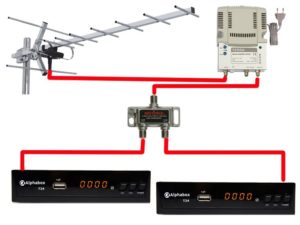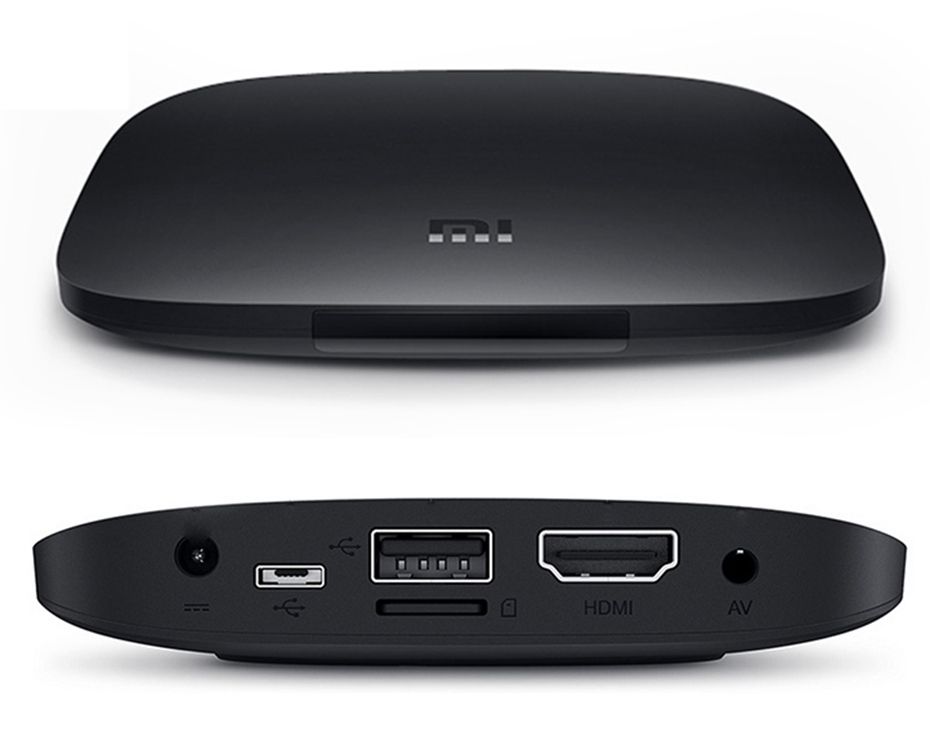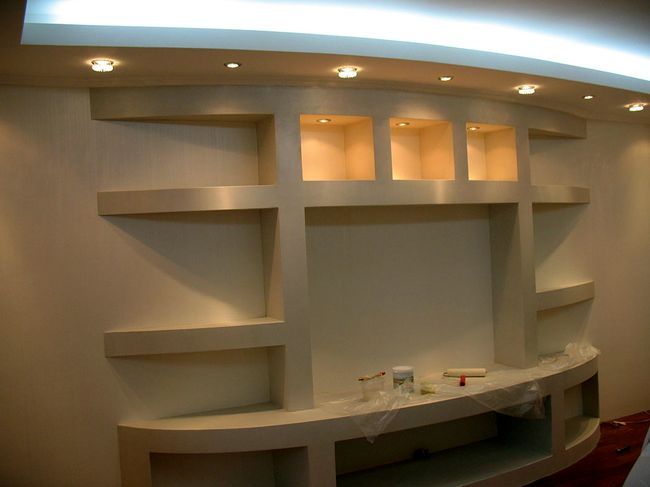How to connect several TVs to one antenna
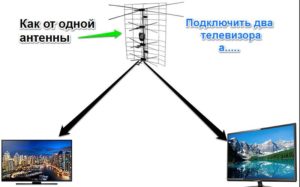 Many users have not one, but two or three TVs at home. And although previously even one TV device was considered an unaffordable luxury, now two TVs in one home are considered normal. However, many owners of several TVs wonder whether it is possible to connect more than one screen to one antenna. This need is caused, first of all, by savings, since it is much more convenient to use one antenna for all TVs rather than connecting a separate antenna to each TV device. Also, the need to connect different devices to one antenna is caused by the impossibility of high-quality signal reception on all sides of the house or apartment. In other words, it is easier for the user to ensure good signal reception on one antenna than to configure each receiving device individually.
Many users have not one, but two or three TVs at home. And although previously even one TV device was considered an unaffordable luxury, now two TVs in one home are considered normal. However, many owners of several TVs wonder whether it is possible to connect more than one screen to one antenna. This need is caused, first of all, by savings, since it is much more convenient to use one antenna for all TVs rather than connecting a separate antenna to each TV device. Also, the need to connect different devices to one antenna is caused by the impossibility of high-quality signal reception on all sides of the house or apartment. In other words, it is easier for the user to ensure good signal reception on one antenna than to configure each receiving device individually.
The content of the article
Is it possible to connect several TVs to one antenna?
You can connect several TVs to one antenna. To do this, it is enough to use a special splitter, which will allow you to transmit signals through two cables instead of one.
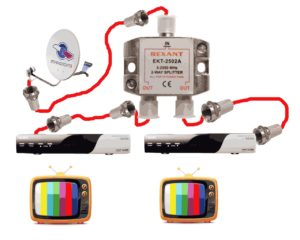
How many TVs can you connect to one antenna?
If you have special knowledge and skills, the number of connected TVs is unlimited. To do this, you only need special splitters or adapters that duplicate the incoming signal to two cables. However, the user should remember that each connected adapter or splitter degrades the signal quality, and it is not advisable to connect more than five devices to one antenna.
How to connect several TVs to one antenna.
The simplest and most convenient way is to use a regular splitter. There are two types of splitters: passive and active. Let's look at them in more detail.
 Passive splitters usually consist of ordinary transistors or resistors. They simply split the signal into two identical ones and transmit it further along two cables. The main problem of this technology is that when divided, the output signal is attenuated by half, therefore, only 50% of the original information will reach the terminal device. This is not very critical for two TVs, but if the signal is divided into 3 or 4 parts, then the image deteriorates significantly, which becomes noticeable to the naked eye.
Passive splitters usually consist of ordinary transistors or resistors. They simply split the signal into two identical ones and transmit it further along two cables. The main problem of this technology is that when divided, the output signal is attenuated by half, therefore, only 50% of the original information will reach the terminal device. This is not very critical for two TVs, but if the signal is divided into 3 or 4 parts, then the image deteriorates significantly, which becomes noticeable to the naked eye.- Active splitters, in turn, allow you to maintain signal quality, thanks to the power amplification stage that is contained in the circuitry of these devices. These splitters transmit the signal with minimal power loss to multiple devices. However, these devices have a significant disadvantage - they provide only one-way communication.
Many Internet providers transmit information over the same cable as television. This makes it impossible for the Internet to work when an active splitter is connected, since feedback is required for its operation.To avoid such problems, you should first install a passive splitter on the common cable. And from it an Internet cable will go out to one output, and a cable with a television signal will go out to the other, which will, in turn, be connected to a passive splitter.
ATTENTION. It should be remembered that loss of signal quality can be caused not only by a bad splitter, but also by a low-quality cable.
Connecting two TVs
Below are step-by-step instructions for connecting two devices to an antenna via a regular splitter.
- First, you should carefully strip the cable without damaging the screen and foil.
- Then you should twist the foil around the wire. In this case, the central core should not touch the foil.
- Screw the connector onto the cable.
- The next step is to connect the cable to the divider.
After this, the user has the opportunity to watch TV from one antenna on two devices.
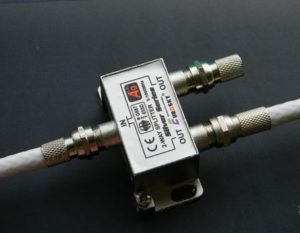
How to connect three TVs
In order to connect three TVs, you must use an active splitter. The cable from the antenna should be connected to a divider with an amplification stage, and a cable from it should be run to another splitter. The latter can be either passive or active, since the input gain is sufficient for correct operation. The process of connecting a cable to an active splitter is the same as to a passive one.
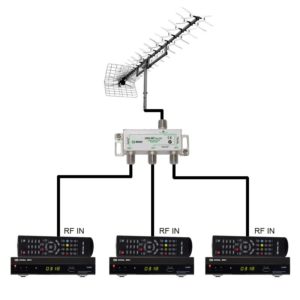
Main problems and ways to fix them.
- Bad image. First of all, this problem may be caused by a poor-quality splitter or cable. Perhaps the insulation is broken somewhere or the connector is damaged. The components should be replaced and if the picture does not improve, then the problem lies elsewhere. Also, the cause of a bad signal may be in the antenna itself. If there is interference, you should try changing the location or rotation of the antenna and look for changes in image quality.
- No image available. If there is no signal at all, you should pay attention to the divider. Typically active dividers have a connector for additional power. It may also be due to a faulty antenna or a broken connector on the TV itself. You should try working with a different antenna or with a different TV device.
You should also remember that the Internet connection does not work with an active splitter, since such devices do not have feedback.